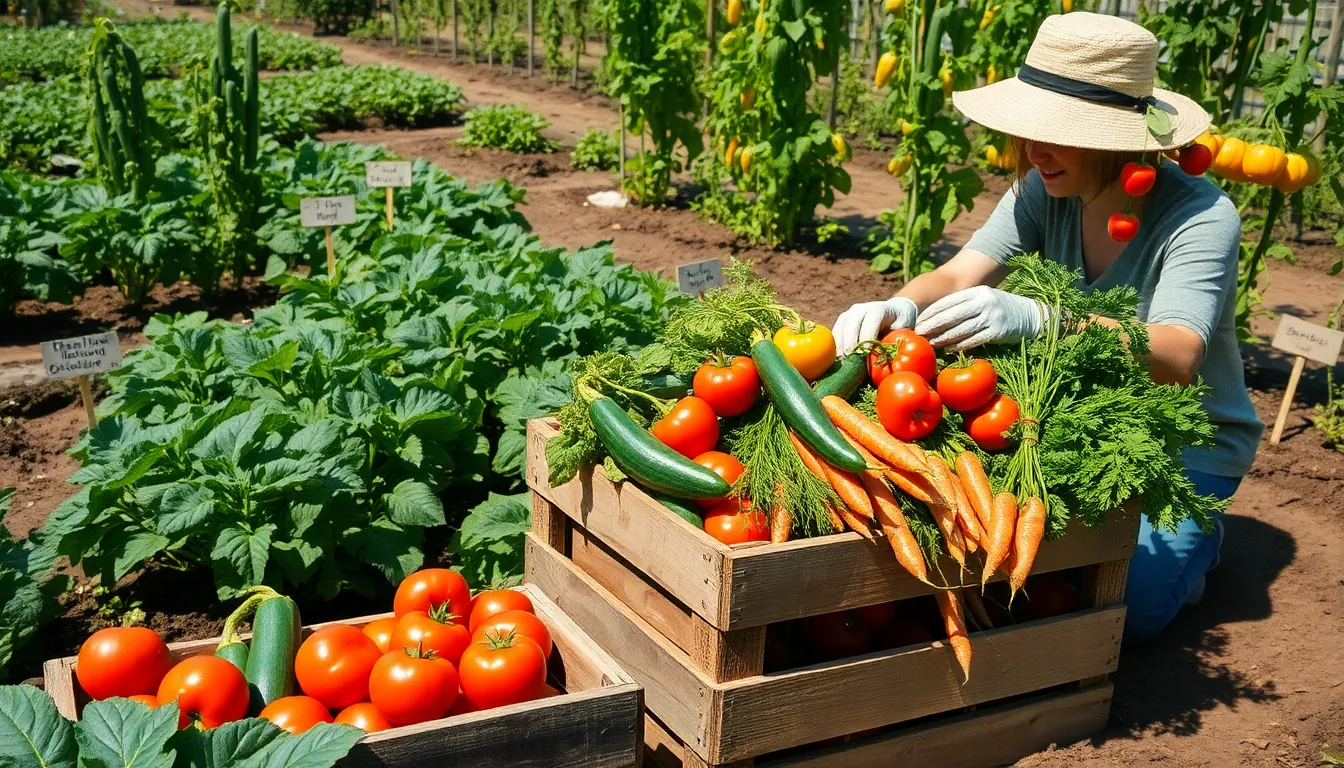Harvesting vegetables is a joyous milestone in the gardener’s journey, whether you’re sowing your first seeds or refining your seasoned techniques. This practice not only celebrates the fruits (or vegetables, in this case) of your labor but also ensures that your produce is at its peak in flavor, nutrition, and freshness. The timing and method of harvesting are crucial, affecting everything from the taste of your meals to the longevity of your garden’s productivity.
For beginners, understanding when and how to harvest can transform your gardening efforts from mere survival to thriving success. Experienced gardeners will find that fine-tuning their harvesting skills can maximize their yields and enhance the quality of their crops. In this article, we’ll demystify the art of harvesting, guiding you through the best practices for a variety of vegetables, ensuring that your garden continues to flourish.
You’ll discover how to recognize the signs that indicate your vegetables are ready to be picked, and learn techniques that preserve the life of your plants for future harvests. From leafy greens to root vegetables, each type has its own nuances and secrets that can make all the difference. By the end of this exploration, you’ll be equipped with the knowledge and confidence to make each harvest a rewarding experience, bringing the vibrant flavors of your garden straight to your table.
Understanding Vegetable Harvesting Basics

Understanding when to harvest your vegetables is crucial for maximizing flavor and nutrition. Begin by checking the seed packet or plant label for specific maturity dates, as this provides a reliable starting point for timing your harvest.
Regularly monitor your plants for visual cues to determine readiness. For example, many root vegetables like carrots and radishes show the top of their root above the soil, indicating they are ready to be pulled.
Harvesting in the early morning is generally recommended because plants are fullest of moisture after the cooler night temperatures. This practice helps ensure that leafy greens and herbs like lettuce and basil remain crisp and fresh.
For more experienced gardeners, understanding the subtle signs of ripeness can enhance your harvest. Tomatoes, for example, should be picked when fully colored but still firm, while peppers can be left to ripen further for a sweeter taste.
It’s important to handle your vegetables gently during harvest to avoid bruising or damage. Use clean, sharp scissors or pruning shears for cutting fruits like cucumbers and beans to prevent disease entry and promote further growth.
Develop a habit of consistent harvesting to encourage plants to produce more. Removing mature produce regularly not only prevents overripeness but also stimulates the plant to continue flowering and setting more fruit.
Identifying Peak Harvest Times
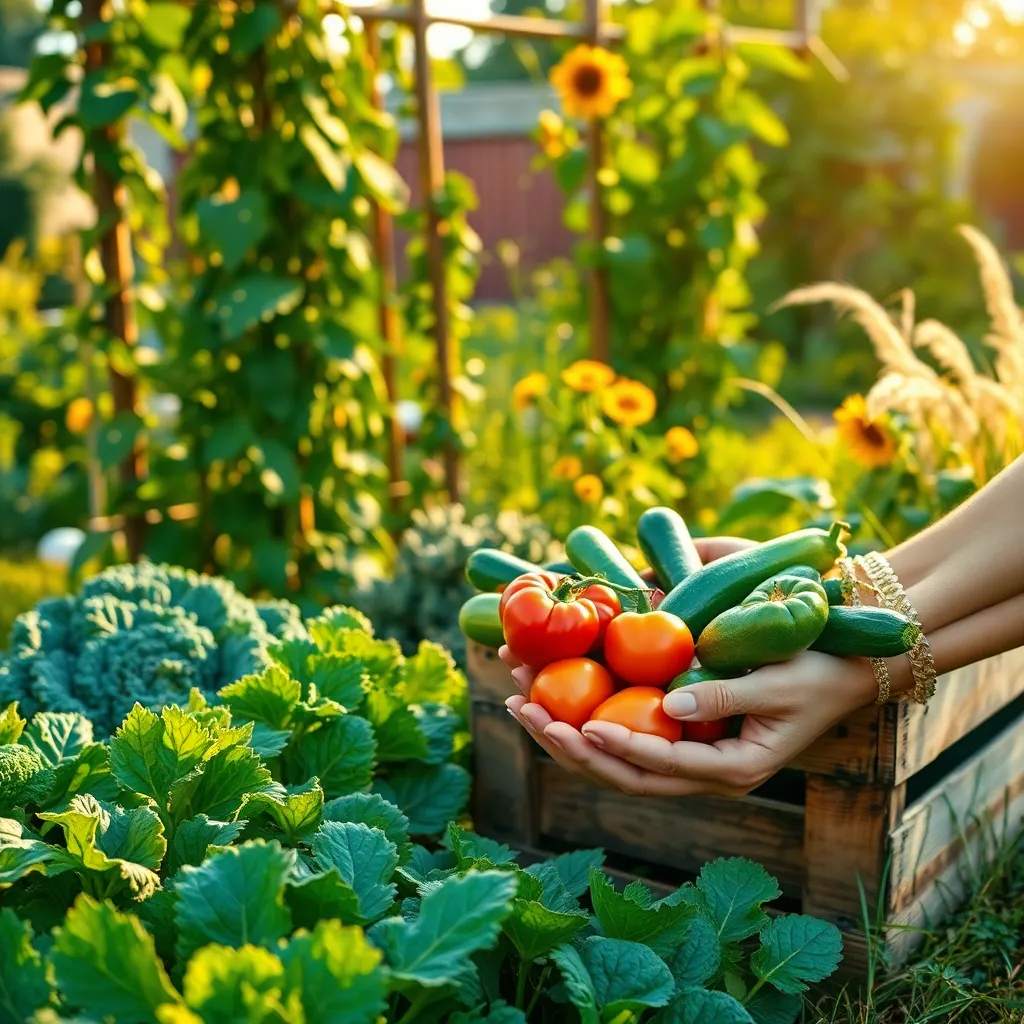
Determining the peak harvest time for your vegetables is crucial for maximizing flavor and nutritional value. One practical method is to regularly observe your plants and note changes in color, size, and texture, which often indicate readiness for harvest.
For example, when harvesting tomatoes, look for a uniform color that matches the variety you’ve planted, whether it be red, yellow, or even purple. Additionally, a gentle squeeze will reveal if the fruit is firm yet slightly yielding, suggesting it’s ripe and ready to be picked.
Root vegetables like carrots and radishes require a bit more finesse. These are typically ready when their shoulders, visible above the soil, reach the expected diameter; for carrots, this might be around three-quarters of an inch, while radishes can be harvested when their tops are about one inch across.
Leafy greens such as lettuce and spinach benefit from a continuous harvest approach. Begin picking the outer leaves first when they reach a usable size, usually around 4-6 inches long, which encourages the plant to continue producing new growth.
For advanced gardeners, using a refractometer can measure the sugar content in fruits like melons, helping to pinpoint the sweetest harvest time. Also, maintaining a consistent watering schedule, especially during dry spells, ensures that plants are less stressed and produce the best-tasting vegetables.
Tools for Efficient Harvesting
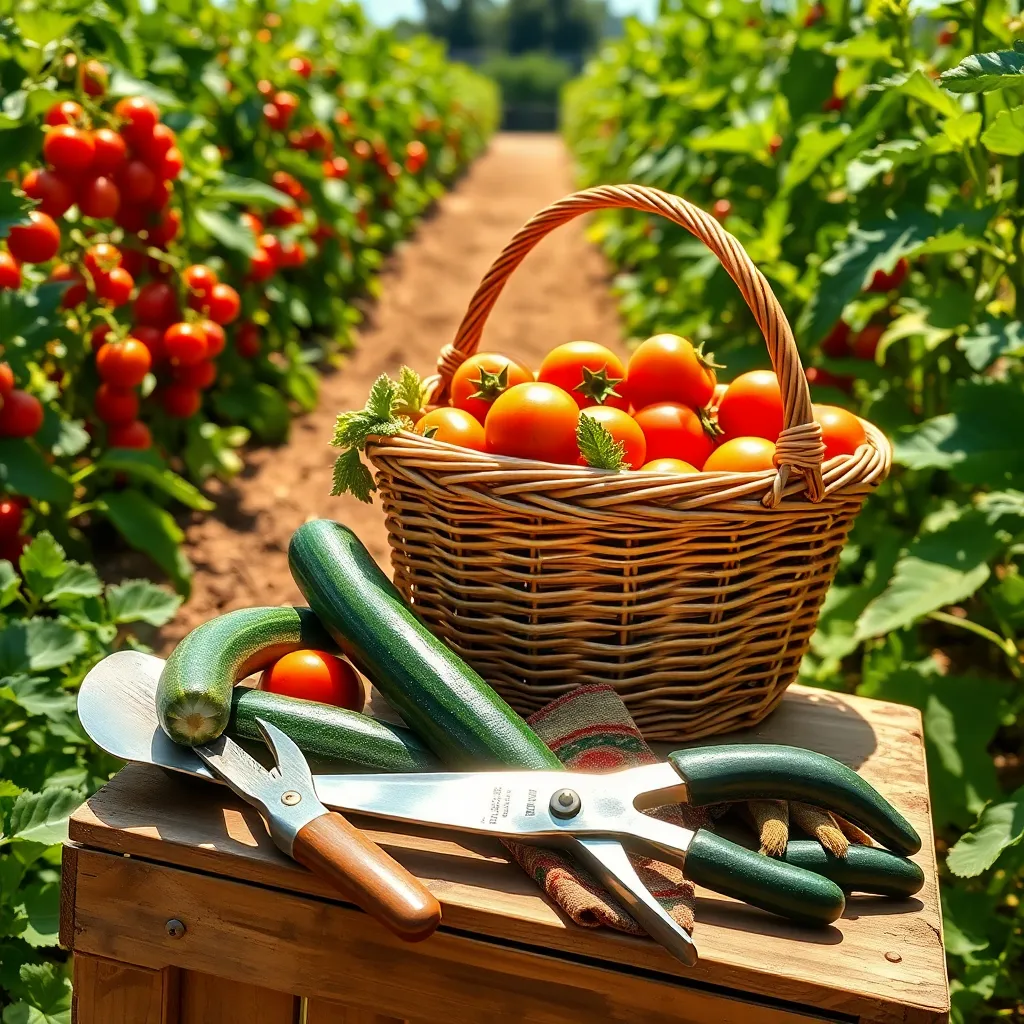
To make harvesting more efficient, having the right tools is essential. A good pair of sharp pruning shears can make clean cuts, which are important for the health of the plant and the quality of the harvested produce.
Invest in a sturdy harvesting knife, especially for larger vegetables like squash or cabbage. These knives are designed to cut through tough stems without damaging the plant or the produce.
Beginners will find that a simple garden basket or trug can greatly improve the harvesting process. These containers are designed to carry multiple items without crushing delicate vegetables, making your trips back and forth to the garden much easier.
Experienced gardeners might consider using a wheeled cart for larger harvests. This not only saves time but also reduces strain on your back and arms, allowing you to pick more produce in a single session.
Maintain your tools regularly to ensure they remain effective. Clean and sharpen your shears and knives after each use to prevent disease transmission and improve their longevity.
Post-Harvest Handling Techniques
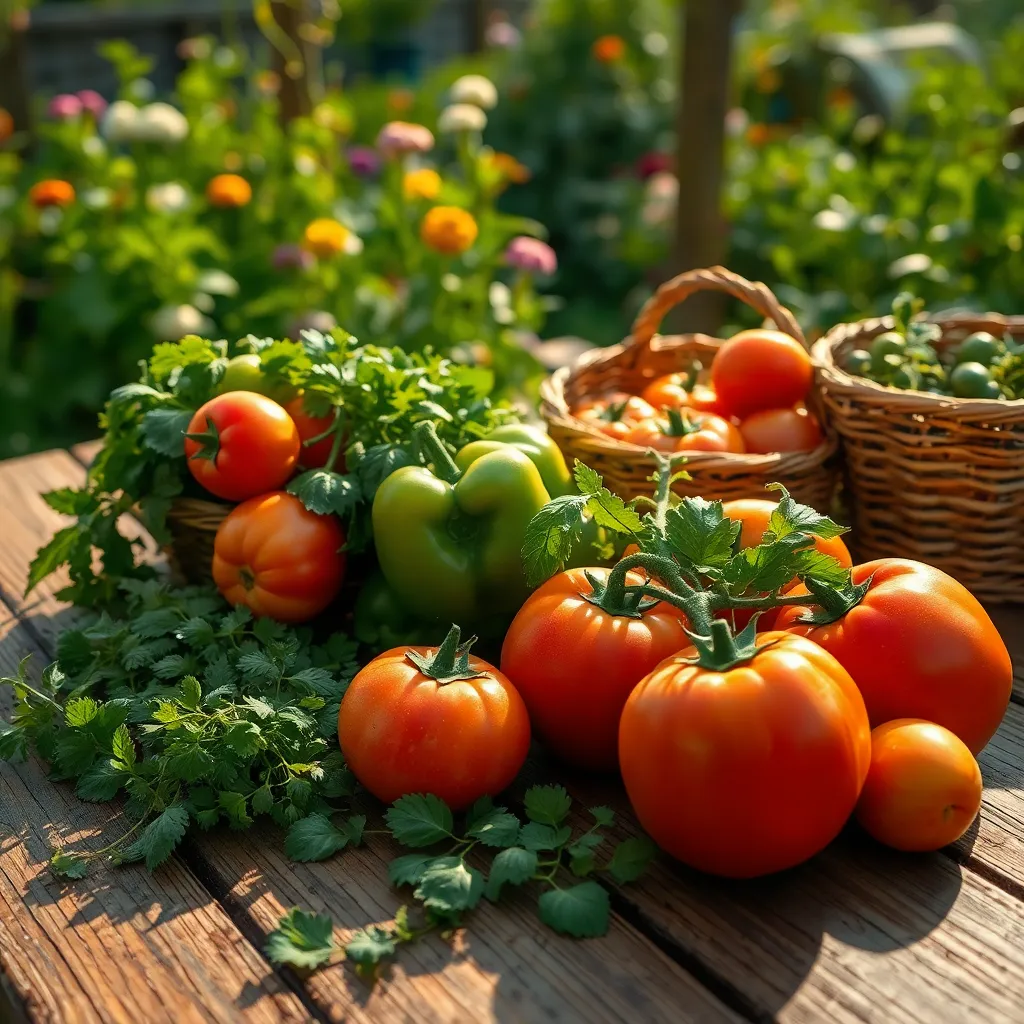
After harvesting, it’s crucial to handle your vegetables properly to maintain their freshness and quality. Begin by gently cleaning your produce, removing any dirt or debris using a soft brush or a quick rinse with cool water.
Proper drying is essential to prevent mold and spoilage. Lay your vegetables on a clean towel or drying rack, ensuring they are spaced out to allow adequate air circulation.
Once dried, store your vegetables correctly based on their individual needs. Root vegetables such as carrots and beets prefer a cool, humid environment, while tomatoes and peppers fare better at room temperature to preserve their flavors.
For long-term storage, consider methods like canning, freezing, or dehydrating, which can extend the shelf life of your harvest significantly. Each method requires specific preparation, so be sure to research the best practices for the vegetables you’ve grown.
Storing and Preserving Harvested Vegetables
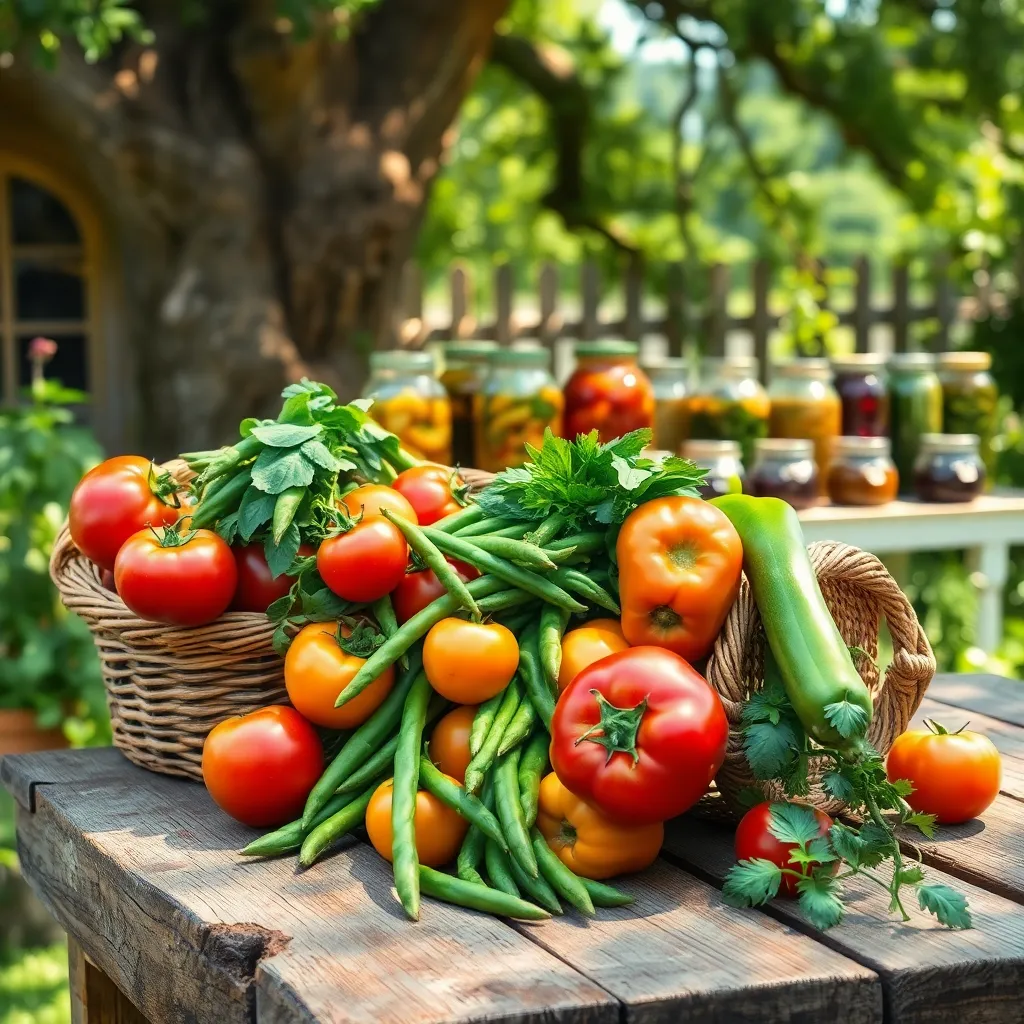
Properly storing and preserving harvested vegetables is crucial to extend their shelf life and maintain their nutritional value. To begin with, root vegetables like carrots and potatoes should be stored in a cool, dark place, ideally between 32-40°F, to prevent spoilage and sprouting.
Leafy greens, such as lettuce and spinach, are best stored in the refrigerator wrapped in a damp cloth. This method helps maintain their moisture levels and keeps them crisp and fresh for longer.
For vegetables like tomatoes and peppers, which continue to ripen after harvesting, room temperature is ideal until they reach your desired ripeness. Then, they can be placed in the refrigerator to slow down the ripening process and prolong their usability.
Consider preserving excess harvest through methods such as canning, freezing, or drying. Canning is particularly effective for tomatoes and beans, while freezing works well for green beans and peas, ensuring you enjoy your harvest all year round.
Conclusion: Growing Success with These Plants
In exploring ‘What Is Harvest Vegetables,’ we’ve uncovered five essential relationship concepts that parallel the nurturing art of gardening. First, just as we regularly tend to our garden, consistent communication is vital for a flourishing relationship. Second, understanding the seasons of love reminds us that relationships evolve, requiring patience and adaptability. Third, recognizing the weeds, or negative habits, allows us to address them before they hinder growth. Fourth, celebrating the harvest is akin to cherishing shared milestones and successes. Lastly, investing time and effort into the soil of trust and respect lays a foundation for enduring love.
As an immediate next step, identify one small action you can take today to nurture your relationship, whether it’s a heartfelt conversation or a simple act of kindness. Remember, relationships, like gardens, thrive on persistent care and attention.
For future reference and deeper insights, save this article. It will serve as a valuable guide on your journey toward relationship success. Embrace this opportunity to cultivate a partnership that stands the test of time, and watch as your love blossoms into something truly remarkable.

